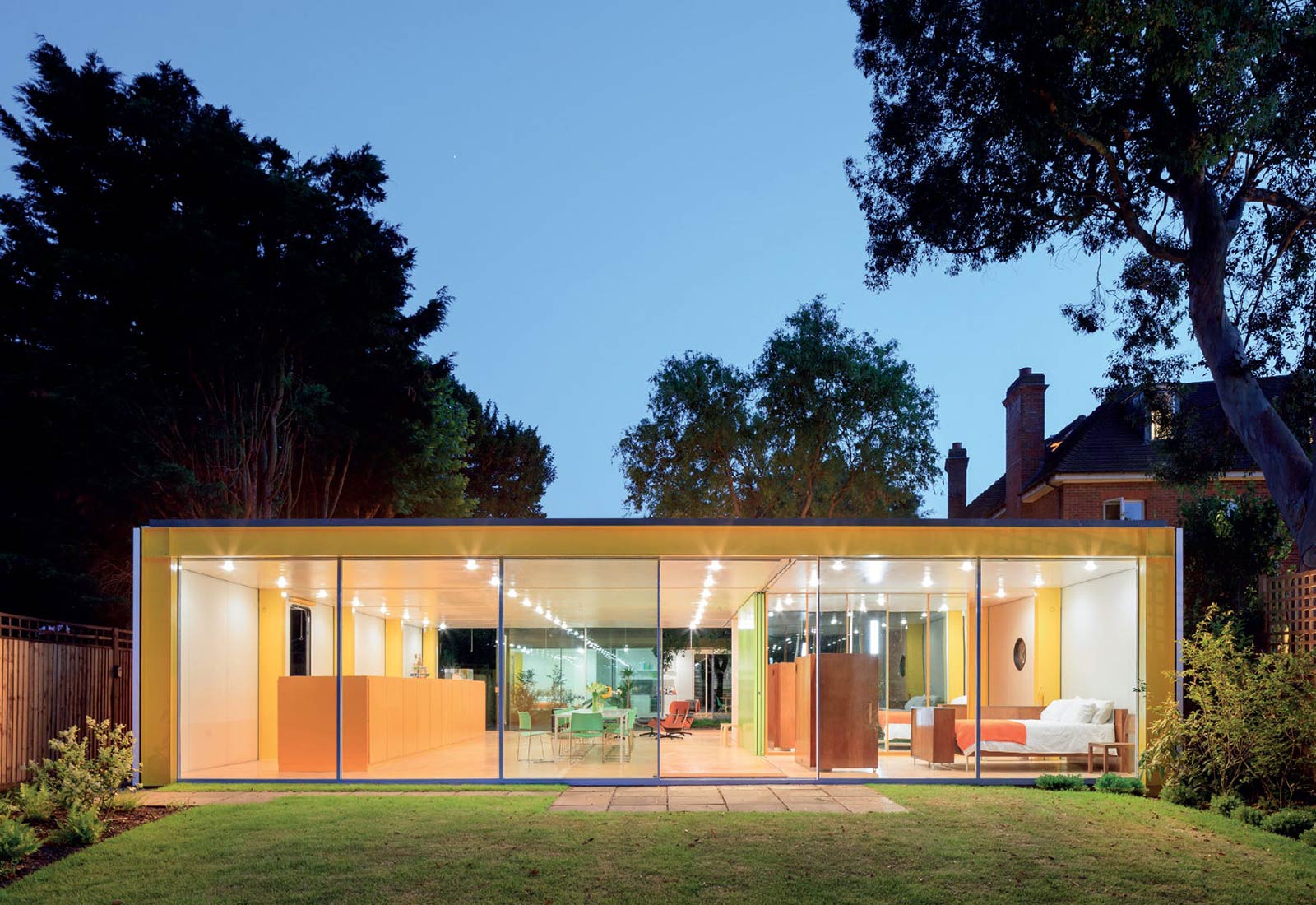Life, Architecture and the Fair Society.
A few thoughts about
Richard Rogers’s autobiography
Richard Rogers’s autobiography
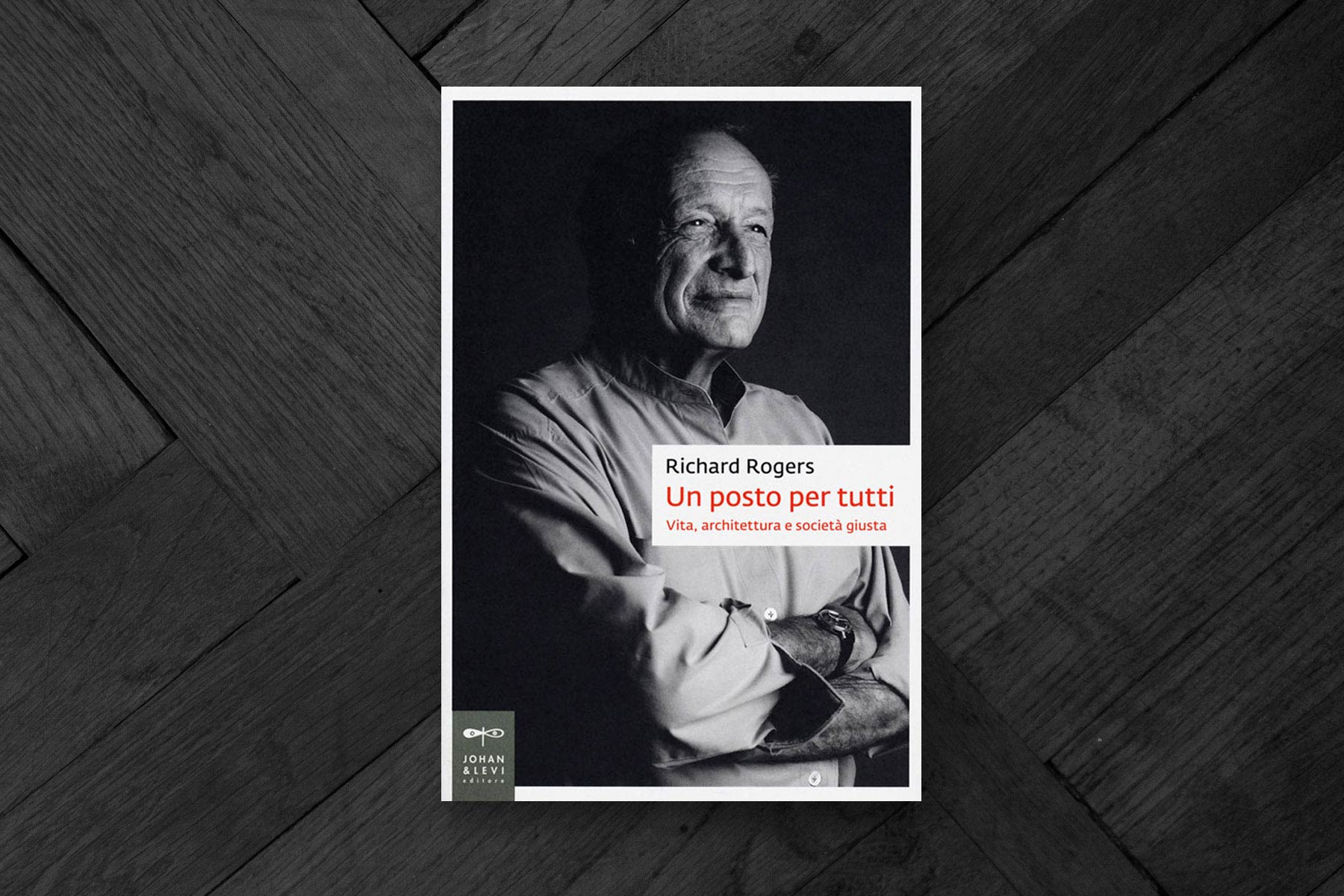 Ph. © Nicola-Matteo Munari
Ph. © Nicola-Matteo Munari
I have just finished reading ‘A Place for All People. Life, Architecture and the Fair Society’ (published in Italy by Johan & Levi, 2018). It is the autobiography of renowned architect Richard Rogers (1933-2021). It is a very well written book, printed on a beautiful paper in a compact, comfortable size (23×15.5 cm).
When I first saw the book in the shop it was the title to engage my attention. The words architecture, society and the concept of fairness—or better justness, in the Italian translation—match my own ideas about the purpose and significance of architecture. So I thought, “Finally a book about architecture that gives more relevance to the thoughts than the images.”
Another thing that made me buy the book, even if I understood it only later, was the beautiful black and white portrait reproduced on the cover, elegantly framed by a white border. In the portrait Rogers seems to be imbued with a heroic aura—the face is marked by time, the arms are firmly crossed, the sleeves of the shirt are rolled up, and the pupils are white instead of black, illuminated by a light that wisely builds the image of a ‘just man’. Ideally, it seems that is the light of justice to illuminate him, a suggestion that certainly would not be possible if the photo had been in colour, letting us discover that Rogers’s Korean shirt is probably of a very bright fuchsia.
Before going on: Why commenting a book by an architect on the website of a graphic design firm? Mainly for three reasons.
One: Because I think of myself as a graphic designer with an architectural attitude. I have always been interested in architecture. I have studied architecture before moving to graphic design. And I try to approach graphic design in a structural, constructive, architectural way.
Second: Because I consider graphic design somewhat as an extension of architecture, or an expression of architecture in graphics. Architecture shapes the environment in which we live and the products of graphic design are part of that same environment, which is initially shaped and thus informed by architecture. So it is very important to know and to understand architecture to design in a better and more conscious way.
Third: Because I believe that is of paramount importance to enrich a designer’s education through knowledge and stimuli coming from other fields of design, aesthetics and visual culture, such as architecture (but also furniture, product design, photography, etc.).
One: Because I think of myself as a graphic designer with an architectural attitude. I have always been interested in architecture. I have studied architecture before moving to graphic design. And I try to approach graphic design in a structural, constructive, architectural way.
Second: Because I consider graphic design somewhat as an extension of architecture, or an expression of architecture in graphics. Architecture shapes the environment in which we live and the products of graphic design are part of that same environment, which is initially shaped and thus informed by architecture. So it is very important to know and to understand architecture to design in a better and more conscious way.
Third: Because I believe that is of paramount importance to enrich a designer’s education through knowledge and stimuli coming from other fields of design, aesthetics and visual culture, such as architecture (but also furniture, product design, photography, etc.).
When I first saw the book in the shop it was the title to engage my attention. The words architecture, society and the concept of fairness—or better justness, in the Italian translation—match my own ideas about the purpose and significance of architecture. So I thought, “Finally a book about architecture that gives more relevance to the thoughts than the images.”
Another thing that made me buy the book, even if I understood it only later, was the beautiful black and white portrait reproduced on the cover, elegantly framed by a white border. In the portrait Rogers seems to be imbued with a heroic aura—the face is marked by time, the arms are firmly crossed, the sleeves of the shirt are rolled up, and the pupils are white instead of black, illuminated by a light that wisely builds the image of a ‘just man’. Ideally, it seems that is the light of justice to illuminate him, a suggestion that certainly would not be possible if the photo had been in colour, letting us discover that Rogers’s Korean shirt is probably of a very bright fuchsia.
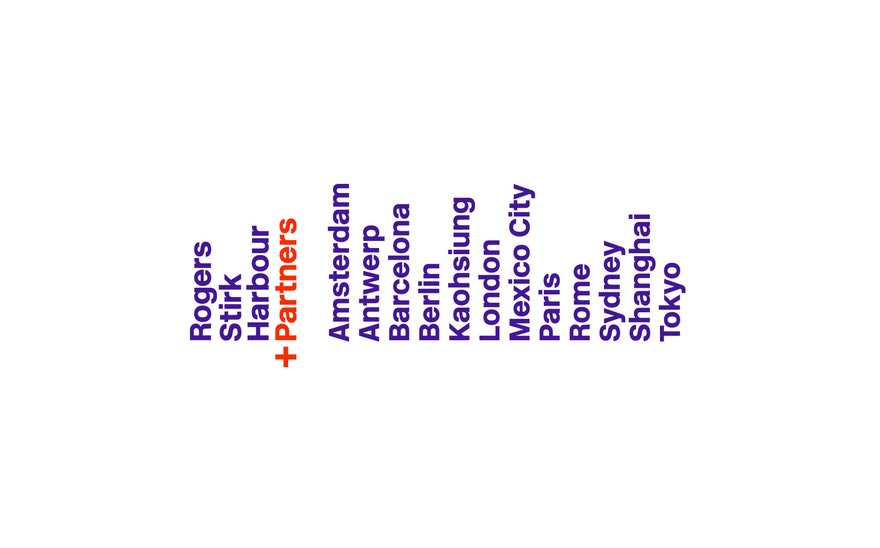
Logo of the firm RSH+P. Designed by Marina Willer (Pentagram), 2015.
2015 © Pentagram
2015 © Pentagram
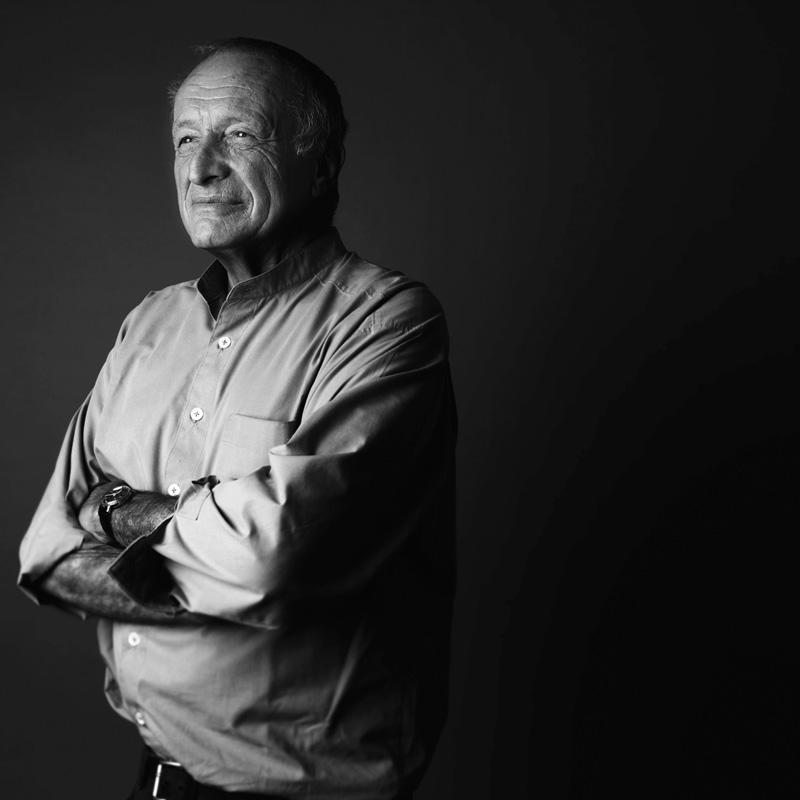 Ph. © Steve Double
Ph. © Steve Double
Searching the portrait on the internet, I discovered that the cover image has been mirrored and I think the choice is just perfect. In this way, the light comes from the right and Rogers looks in the same direction.
In the West we read from left to right and the same direction is subconsciously applied also when we visually read an image. In this way, the left ends up to ideally represent the past and what is known and closer to us—having already lived it—while the right ends up representing the future, the unknown, and what is far away. (It is not by chance that in signage pictograms the airplanes arrive by going down to the left and leave by going up to the right.)
Then by mirroring the photo, the impression is that Rogers is not at the end of a journey but at the beginning of it, facing light and leaving dark behind his back. It is a beautiful and powerful image.
In the West we read from left to right and the same direction is subconsciously applied also when we visually read an image. In this way, the left ends up to ideally represent the past and what is known and closer to us—having already lived it—while the right ends up representing the future, the unknown, and what is far away. (It is not by chance that in signage pictograms the airplanes arrive by going down to the left and leave by going up to the right.)
Then by mirroring the photo, the impression is that Rogers is not at the end of a journey but at the beginning of it, facing light and leaving dark behind his back. It is a beautiful and powerful image.
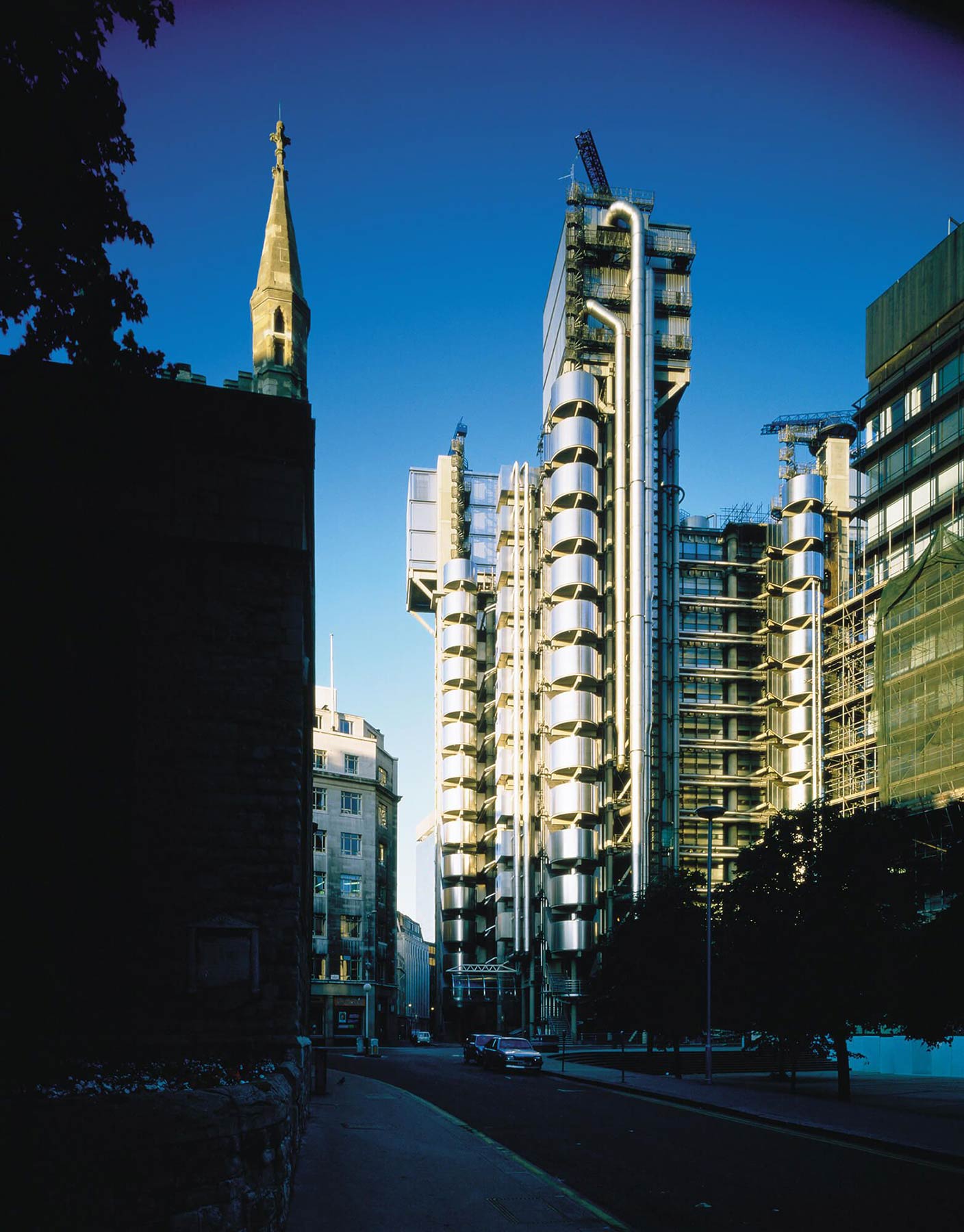
Lloyd’s of London, UK, 1978-86.
Designed with M. Davies,
J. Young, M. Goldschmied.
Ph. © RSH+P
Designed with M. Davies,
J. Young, M. Goldschmied.
Ph. © RSH+P
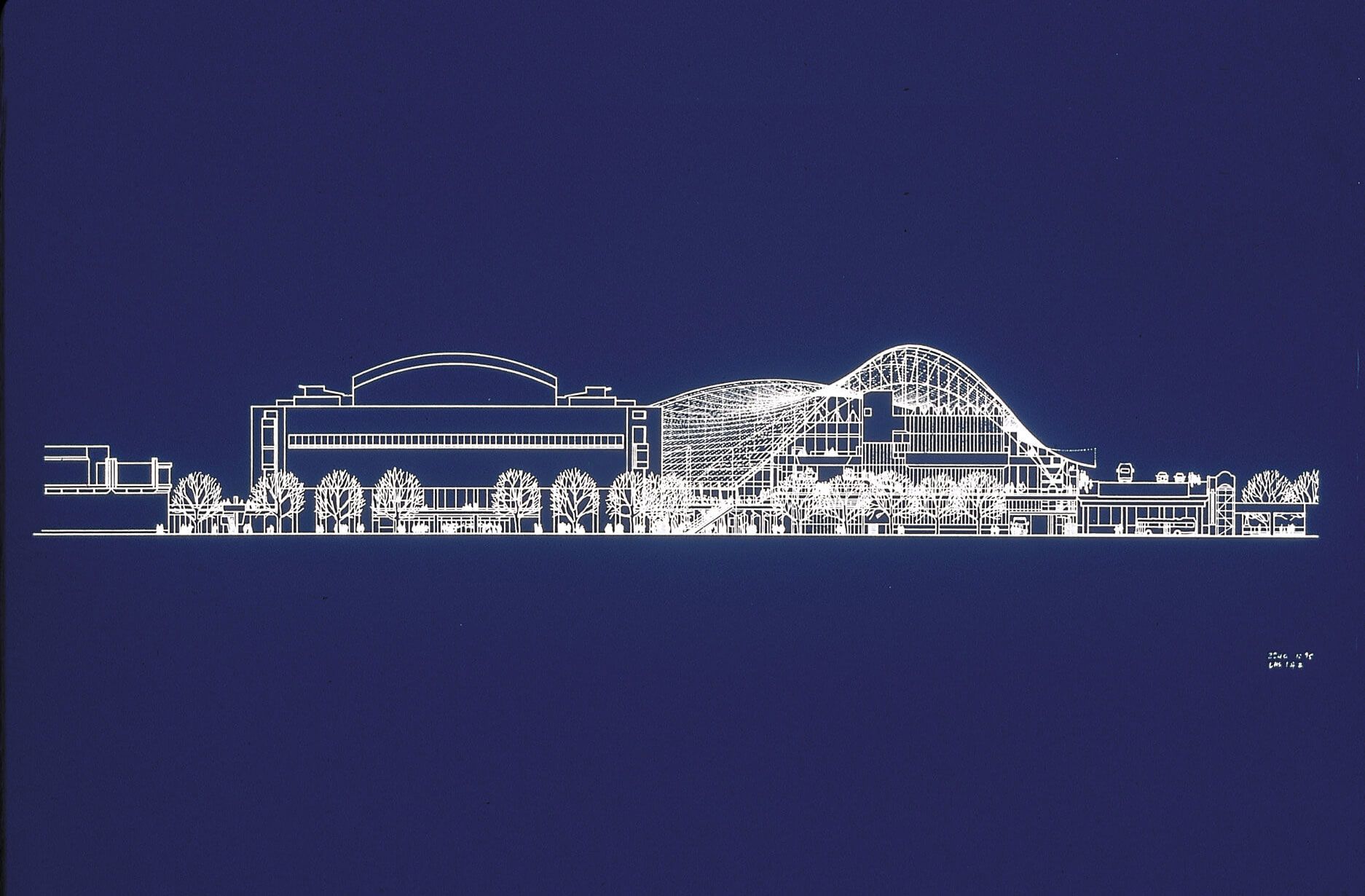
South Bank Arts Centre
(masterplan), 1994.
Ph. © RSH+P
(masterplan), 1994.
Ph. © RSH+P
The book is full of relevant thoughts about architecture as an activity related to building construction, but there are even more thoughts about the reason to be and the human value of architecture.
Paradoxically for a book on architecture, the sentence that I most share and believe to be the most important is this one: “There is no more important task in society than teaching children.” A sentence that seems to have nothing to do with architecture, but only if we conceive it as something absolute and in self-referential terms, something unrelated to the society we live in and for which architecture should be designed.
The main quality of the book is in fact the effectiveness in communicating the necessary connection between architecture—the design of the world that we want to live in—and the society that is both source and reflection of architecture itself. It is a connection implying the understanding of the problems that architecture is called to face and also the responsibility in having to face them with judgment.
Paradoxically for a book on architecture, the sentence that I most share and believe to be the most important is this one: “There is no more important task in society than teaching children.” A sentence that seems to have nothing to do with architecture, but only if we conceive it as something absolute and in self-referential terms, something unrelated to the society we live in and for which architecture should be designed.
The main quality of the book is in fact the effectiveness in communicating the necessary connection between architecture—the design of the world that we want to live in—and the society that is both source and reflection of architecture itself. It is a connection implying the understanding of the problems that architecture is called to face and also the responsibility in having to face them with judgment.
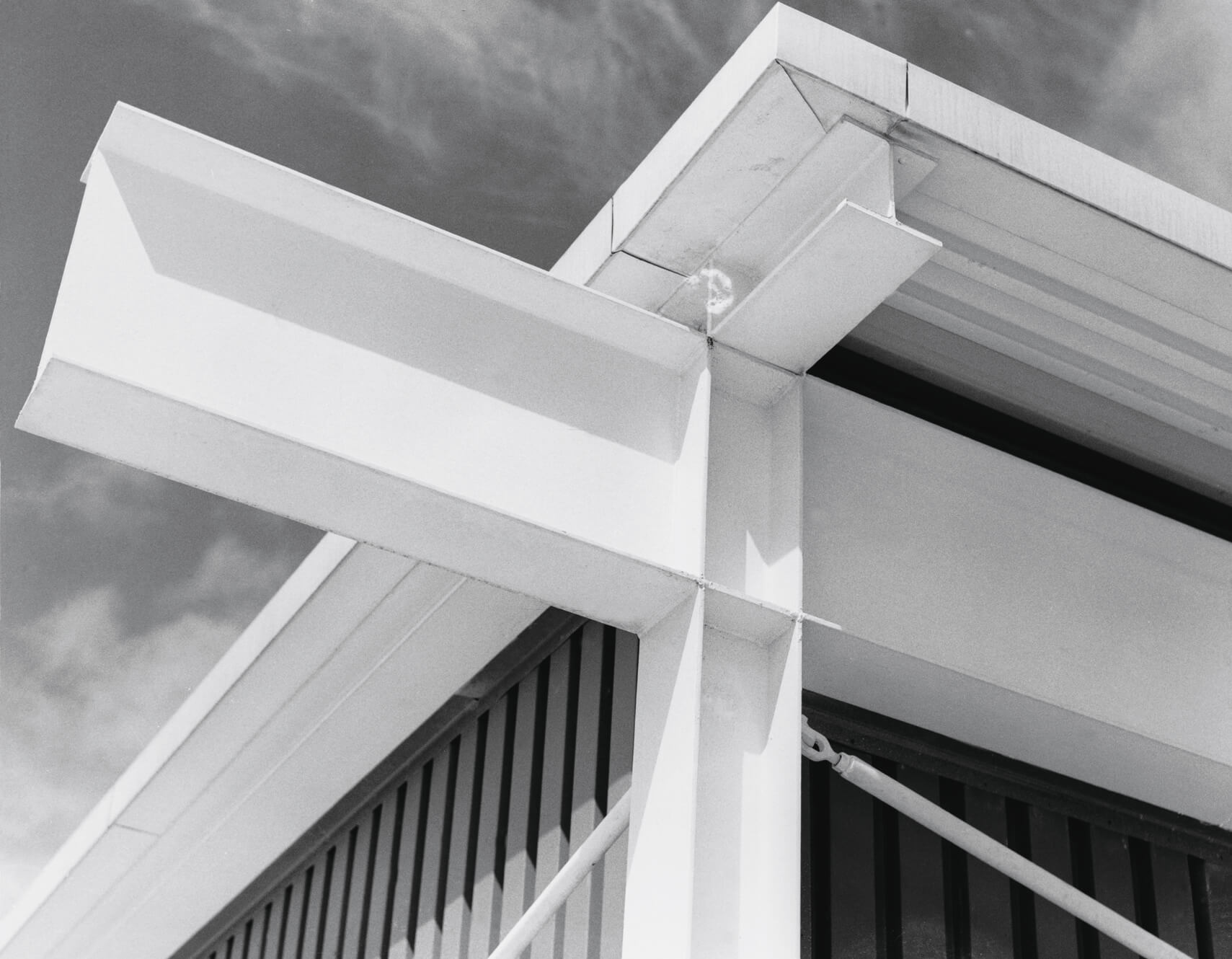
Reliance Controls Ltd.,
Swindon, UK, 1967. Designed
with Sir Norman Foster.
Ph. © RSH+P
Swindon, UK, 1967. Designed
with Sir Norman Foster.
Ph. © RSH+P

Fleetguard International, Quimper/Kemper, France, 1979-81.
Ph. © RSH+P
Ph. © RSH+P
Rogers, who indeed appreciates and cultivates beauty, deals with the question of architecture with great responsibility by publishing a book that has nothing to do with those glossy volumes crowding bookshops, all dedicated to aesthetic celebrations of buildings that cannot go beyond their appearance, thus neglecting the fact that a conception of architecture as an aesthetic object only—and not as a social object—makes no sense; if architecture neglects people, we might as well make buildings-sculptures in which it is not even possible to enter.
The book strongly reflects my own vision of architecture, conceived as a social discipline and the expression of human’s civic will. By civic will I mean the will to build a world representing one’s own vision. In fact, civic is not only a duty to be fulfilled, but also and above all a will driving us to propose that same duty as a goal to reach by establishing an order allowing human beings to administrate common living on Earth.
By expressing a vision of the world, architecture always expresses the social aspirations of the people, and that is also true when we simply think about the house, both the building and the way we furnish it in order to be a place representing our wish to live a place in happiness.
The book strongly reflects my own vision of architecture, conceived as a social discipline and the expression of human’s civic will. By civic will I mean the will to build a world representing one’s own vision. In fact, civic is not only a duty to be fulfilled, but also and above all a will driving us to propose that same duty as a goal to reach by establishing an order allowing human beings to administrate common living on Earth.
By expressing a vision of the world, architecture always expresses the social aspirations of the people, and that is also true when we simply think about the house, both the building and the way we furnish it in order to be a place representing our wish to live a place in happiness.
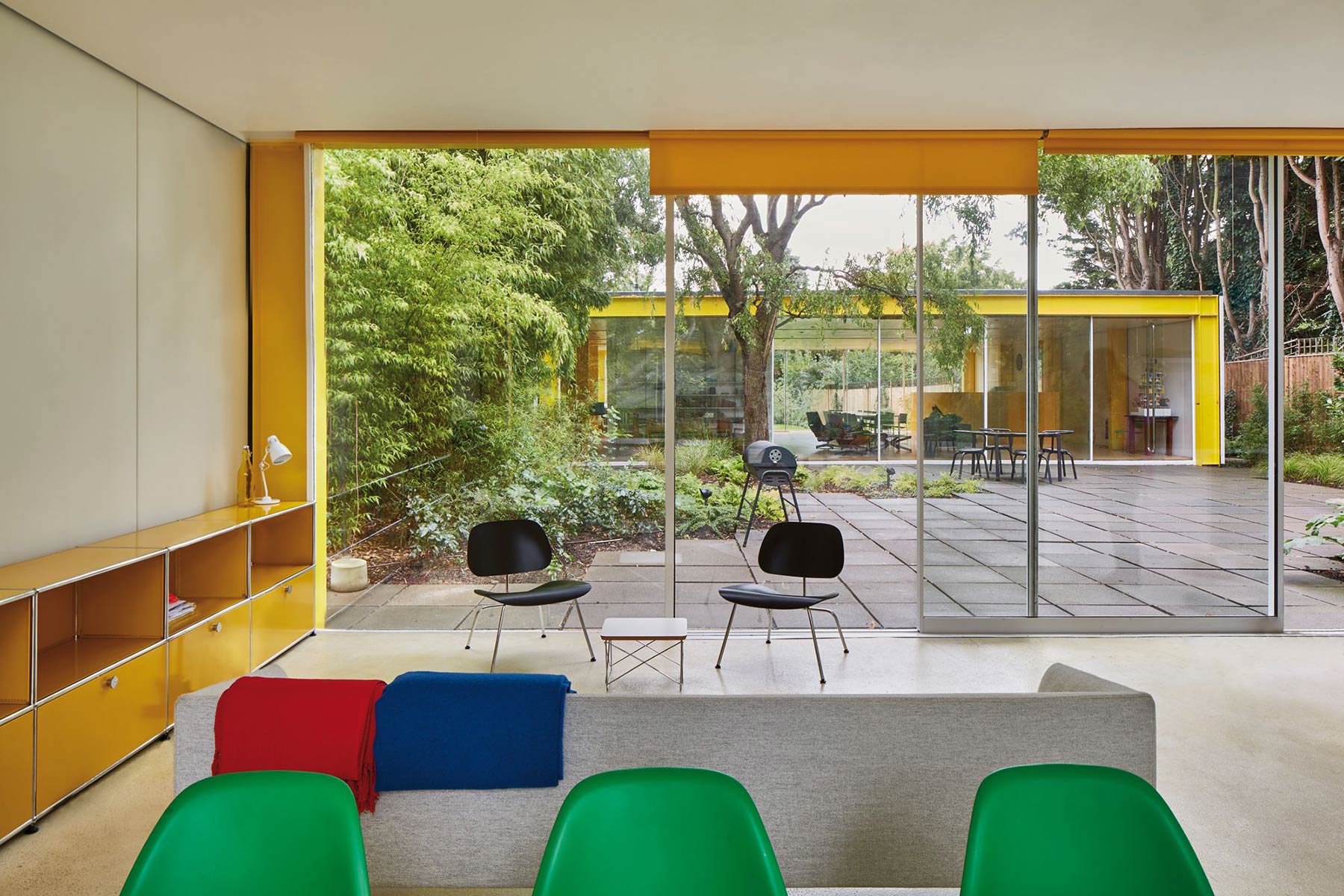
Dr and Mrs Rogers House,
London, UK, 1968-69.
Designed with Su Rogers.
Ph. © Archiproducts
London, UK, 1968-69.
Designed with Su Rogers.
Ph. © Archiproducts

Rogers House, London, UK, 1968-69. View from the garden.
Ph. © Iwan Baan
Ph. © Iwan Baan
I am convinced that architecture makes sense only in relation to the living of people. And the organisation of a society’s living cannot in any way disregard its administration. Architecture and government are inextricably linked and this is not only evident from the substantial regulations relating to the construction of buildings, but also from the fact that governments are instinctively admired for the construction of important architectural works or condemned for neglecting them—just yesterday the Ponte Morandi in Genoa collapsed.
I believe that architecture expresses the will of the people to build a ‘social order’ for themselves, that is a place representing one’s own vision of the world, even when it is simply a vision of one’s own future—the idea of a pleasant place where to be happy to live, sleep, eat, work and spend time on Earth.
The book of Rogers, that stimulates all these and many other thoughts, is a beautiful reading.
© Nicola-Matteo Munari
Originally written,
August 2018
I believe that architecture expresses the will of the people to build a ‘social order’ for themselves, that is a place representing one’s own vision of the world, even when it is simply a vision of one’s own future—the idea of a pleasant place where to be happy to live, sleep, eat, work and spend time on Earth.
The book of Rogers, that stimulates all these and many other thoughts, is a beautiful reading.
© Nicola-Matteo Munari
Originally written,
August 2018
